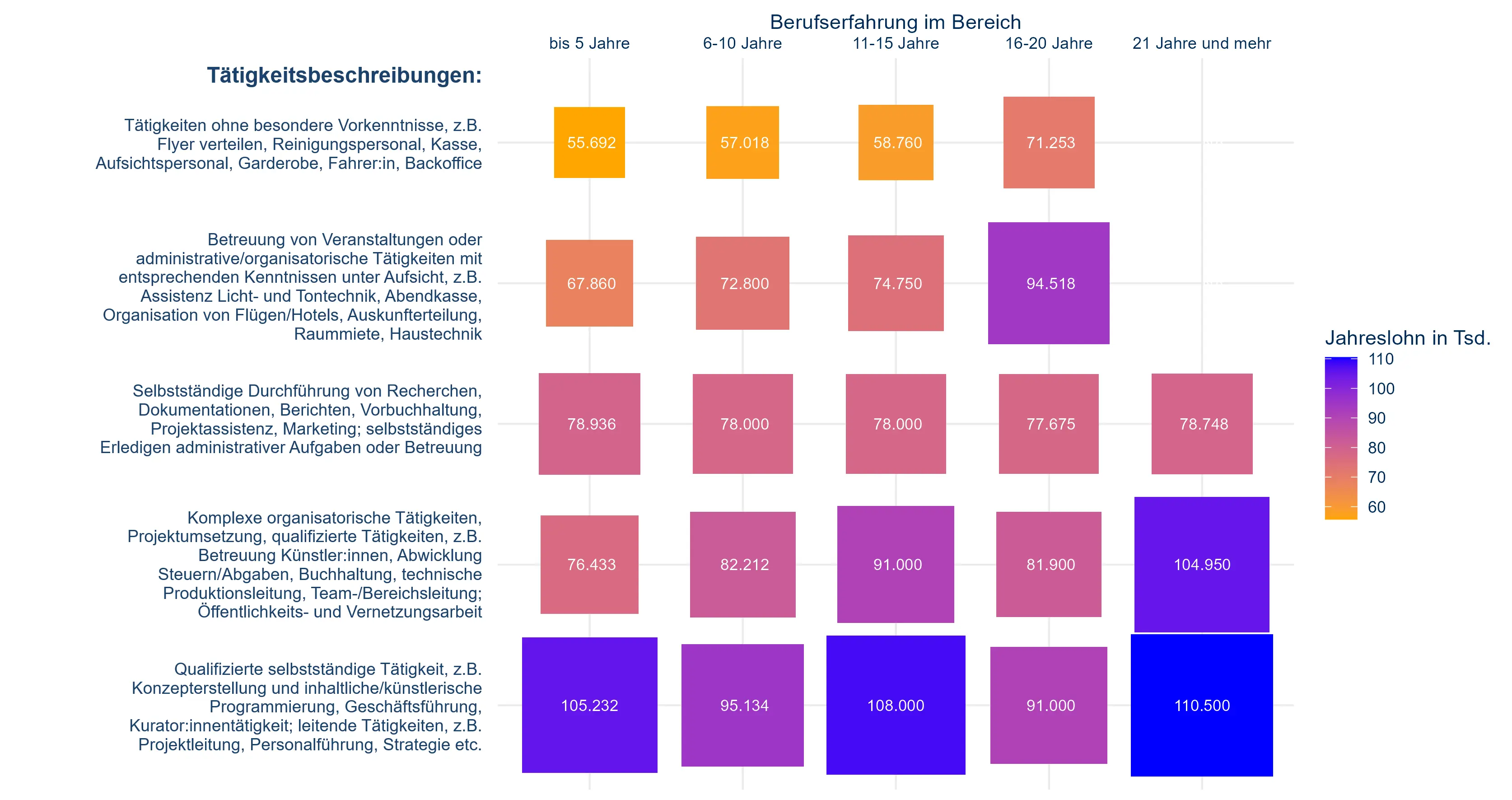The Center for Arts Management and Dampfzentrale Bern have completed the first comprehensive wage study for the independent cultural scene in Switzerland
Supported by Migros Culture Percentage's m2act funding and networking project, the Center for Arts Management investigated the development of working conditions and wages in the Swiss independent cultural scene on behalf of Dampfzentrale Bern.

How do small theatres, festivals and concert organisers deal with inflation, where do their funds come from and how do they determine the wages they pay? Finding answers to these and similar questions is essential if we are to understand the situation of independent cultural organisations and ensure a diverse cultural offering in the future. In cooperation with Dampfzentrale Bern and with the support of Migros Culture Percentage's m2act funding and networking project, the Center for Arts Management therefore conducted a nationwide study into the employment and wage conditions in the independent cultural scene.
The study focussed on back office staff. In contrast to the actual artists, these individuals are usually employed on a permanent basis and perform work that is no less indispensable for the success of cultural programmes. Nevertheless, the situation these workers face in terms of income and social security is not considered particularly attractive, as is the case for workers across the entire cultural sector.
In order to collect reliable data, Dampfzentrale established a sounding board (Michelle Akanji, Anneli Binder, Karin Bitterli, Sophie Mercier, Thomas Keller, Liliane Kuert, Martin Schick und Barbara Stocker) that worked in collaboration with experts from the ZHAW to develop a questionnaire that was sent out to management figures at a total of 59 organisations in the independent cultural scene. The response rate was just shy of 50%. Eleven cantons from Switzerland’s three largest language regions were represented in the sample. The cultural organisations that took part were established institutions, each with a history spanning at least ten years. For the most part, smaller organisations with a high share of part-time workers were represented: the median number of employees stood at 13, while the median number of full-time equivalents was 7.85. On average, the organisations source a good two-thirds of their financing from subsidies, 20% from their own revenues and around 10% from third-party funds such as donations and sponsorships. All in all, this provided the basis of a small yet very meaningful sample for the Swiss independent cultural scene.
The analysis of the survey results focussed on those factors that influence wages within the sector as well as on the specific wage details and the fringe benefits. According to the self-declaration of those who participated in the survey, the most important factors influencing wage levels are responsibility being taken by management and personnel, the field of activity in which you work and your professional experience. However, the survey revealed that wages are only strongly tied to performance level in a few companies. A majority indicated that while remuneration practices are fair and transparent, they are not attractive enough to attract new talent. Accordingly, it is very difficult to fill positions for certain functions where there is a shortage of skilled labour (e.g. technicians).
The study also reveals that many companies have to struggle with tight budgets. As their subsidies have failed to keep pace with inflation, it is not possible to adequately adjust salaries in line with the rising cost of living. A large share of respondents therefore hope for greater public funding. In order to nevertheless be attractive as an employer, many organisations are turning to fringe benefits that boost their employees’ work-life balance rather than their bank balance: more holidays than legally required, the option to work from home and unpaid parental leave.
A key result of the study is a wage table modelled on the Fay Pay salary scheme of IG Kultur Austria. This was based on the gross annual wages declared by the respondents, who ranged from box-office and cleaning staff to artistic directors. The number of years of relevant professional experience was also recorded. In total, wage data for 115 employees in the independent cultural scene was collected. The wage table below presents the median wage by area of activity and professional experience and reveals that, as one would expect, wages rise as jobs become increasingly complex and with greater experience. However, the increase cannot be observed everywhere, and it is not always linear. Whether this is down to systematic reasons or random fluctuations cannot be determined on the basis of the data available.
With the “Independent cultural scene in Switzerland” wage study, Dampfzentrale Bern and the Center for Arts Management have taken an important first step in initiating a discussion about the financial situation of independent cultural organisations. The study's results deliver a sound data basis for providing guidance and allowing for evidence-based decision-making while also offering potential for further projects aimed at improving the independent cultural scene in Switzerland.
Are you interested in cooperating with the Center for Arts Management? You can find further information (in German) on opportunities for collaboration here (PDF 117 kB).
